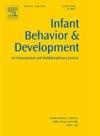Rethinking the study of newborn sociality: Challenges and opportunities
IF 2
3区 心理学
Q3 PSYCHOLOGY, DEVELOPMENTAL
引用次数: 0
Abstract
Growing empirical evidence from the past quarter century reveals surprising sociality in newborns—infants in the first 28 postnatal days—including their ability to elicit and sustain contingent interactions with mutual gaze, social smiling, and sensitively timed, speech-like vocalizations. Newborns seem to have communicative expectations and behave as if they predict others’ goal-directed actions. Despite these discoveries, I review key barriers to progress in newborn developmental science. First, newborn social behavior research has almost exclusively focused on “average” development—based primarily on White, wealthy, English-speaking, Western, populations—treating interindividual differences as noise rather than meaningful, variability. Focusing almost exclusively on averages, especially with small sample sizes, ignores interindividual differences and hinders discoveries. Second, there are few studies of newborn sociality beyond the first postnatal week. In part, this gap in our understanding may be due to, and a consequence of, the mischaracterizations of newborns’ behaviors as passive, limited, disorganized, and low-level reflexes that are subcortically driven. Finally, researchers often assume that newborns’ behaviors are largely independent of experience. To the contrary, newborns’ need for nearly continuous social contact provides them with rich social learning opportunities, which have been shown to have lasting impacts on their development. Given the uniqueness and plasticity of this period, and their high vulnerability, developmental scientists are doing newborns a disservice by neglecting to characterize their social repertoires within and across diverse populations. Awareness of newborns’ social capacities will facilitate a more objective, accurate view of their social potential.
新生儿社会性研究的再思考:挑战与机遇。
在过去的25年里,越来越多的经验证据揭示了新生儿(出生后28天的婴儿)惊人的社会性,包括他们通过相互凝视、社交微笑、敏感的时间、像说话一样的发声来引发和维持偶然互动的能力。新生儿似乎有交流的期望,表现得好像他们预测别人的目标导向的行动。尽管有这些发现,我回顾了新生儿发育科学进展的主要障碍。首先,新生儿社会行为研究几乎只关注“平均”发展——主要以白人、富人、讲英语的人、西方人为研究对象——将个体间差异视为噪音,而不是有意义的可变性。几乎只关注平均值,特别是在小样本量的情况下,忽略了个体间的差异,阻碍了发现。其次,关于出生后第一周之后的新生儿社会性的研究很少。在某种程度上,我们理解上的这种差距可能是由于对新生儿行为的错误描述,即被动、有限、无组织和低水平的反射,这些行为是由皮层下驱动的。最后,研究人员通常认为新生儿的行为在很大程度上与经验无关。相反,新生儿对几乎持续的社会接触的需求为他们提供了丰富的社会学习机会,这已被证明对他们的发展有持久的影响。鉴于这一时期的独特性和可塑性,以及他们的高度脆弱性,发育科学家忽视了他们在不同人群中的社会技能特征,这对新生儿是一种伤害。了解新生儿的社会能力将有助于更客观、准确地了解他们的社会潜力。
本文章由计算机程序翻译,如有差异,请以英文原文为准。
求助全文
约1分钟内获得全文
求助全文
来源期刊

Infant Behavior & Development
PSYCHOLOGY, DEVELOPMENTAL-
CiteScore
4.10
自引率
4.80%
发文量
94
期刊介绍:
Infant Behavior & Development publishes empirical (fundamental and clinical), theoretical, methodological and review papers. Brief reports dealing with behavioral development during infancy (up to 3 years) will also be considered. Papers of an inter- and multidisciplinary nature, for example neuroscience, non-linear dynamics and modelling approaches, are particularly encouraged. Areas covered by the journal include cognitive development, emotional development, perception, perception-action coupling, motor development and socialisation.
 求助内容:
求助内容: 应助结果提醒方式:
应助结果提醒方式:


